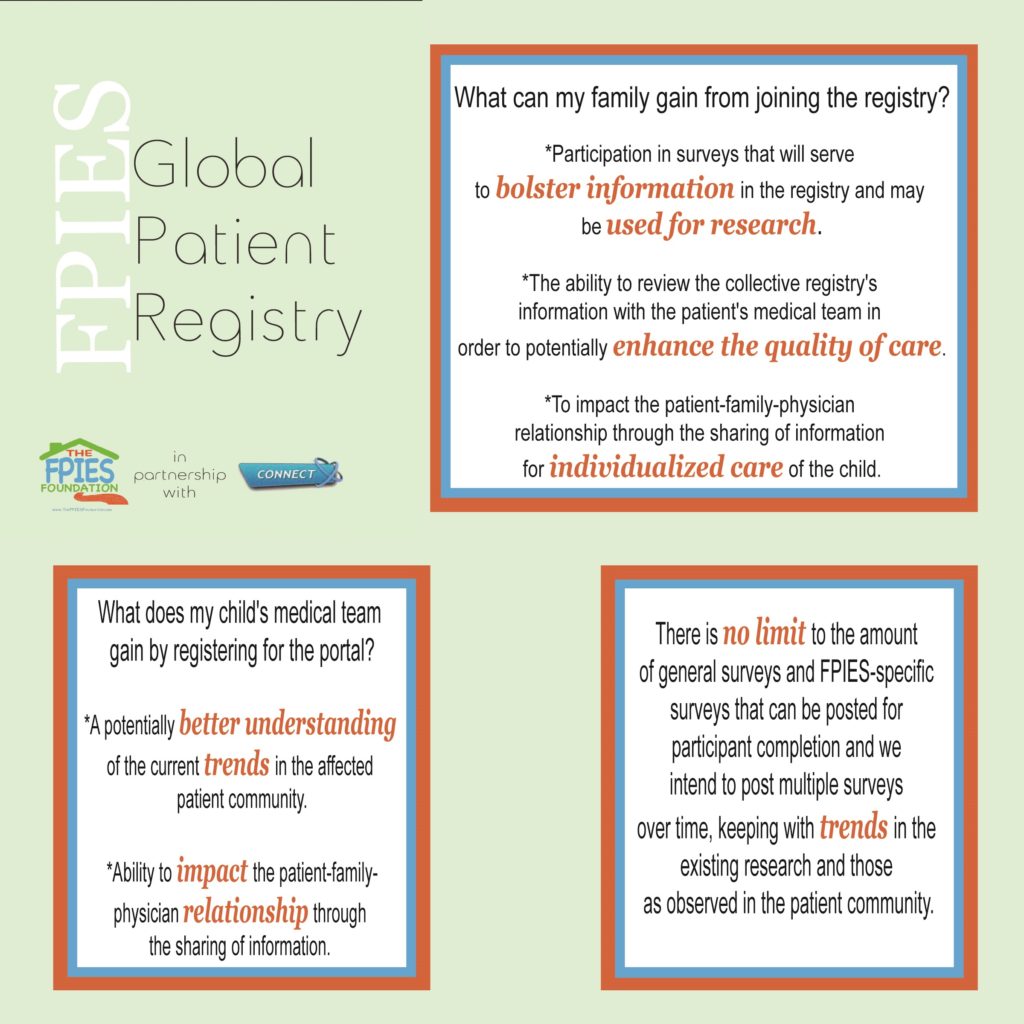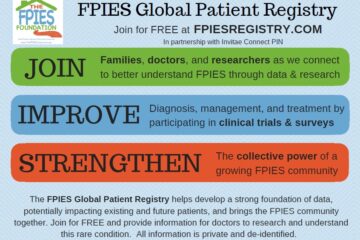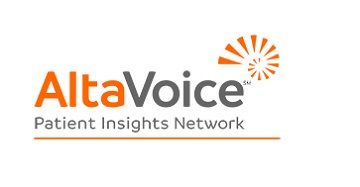The FPIES Global Registry Getting to Know the Patient Registry
Part 2 of 3 in Registry Series
What is a Patient Registry?
Also referred to as a “disease registry” or “clinical registry,” a Patient Registry is a program that collects and stores data related to health information for a specific purpose and in an organized and uniform manner.
In our case, this purpose is to use collected information to further clarify facets of FPIES presentation, diagnosis, treatment and management, and its impact on the whole individual, by means of:
- Further defining symptom presentation
- Examining potential risk factors
- Reviewing quality of life and psychosocial issues,
- Investigating co-occurrence of other conditions,
- Exploring treatment and management approaches currently in use
The term “patient registry” also refers to the records that are then created as a result of the processes used to collect and store data. (for more, see: http://www.ncbi.nlm.nih.gov/books/NBK49448/)
A patient registry must carefully observe confidentiality. In The FPIES Global Patient Registry , patient confidentiality is of utmost importance. The platform for the registry is the CONNECT program from Patient Crossroads, a platform designed for use by rare disease organizations to create patient registries in order to facilitate awareness to the various facets involved in each diagnosis. Key points:
- Data submitted to the registry becomes de-identified – any and all identifying characteristics (name, email, etc) are unable to be associated with data by registry and portal participants
- You can choose the level of contact you have with CONNECT and registry partners, including the decision to opt out of any contact, without your decision impacting participation in surveys
- Data is so secure that the NIH actually houses its own GRDR through Patient Crossroads.
For more, read here: https://www.patientcrossroads.com/security-privacy.html
What can my family gain from joining the patient registry?
- Participation in surveys that will serve to bolster information in the registry and may be used for research
- A broader understanding about the rare disease community to which you belong by viewing the information compiled from the surveys offered— information is able to be viewed as soon as each completed survey is submitted!
- The ability to review the collective registry’s information with the patient’s medical team in order to potentially enhance the quality of care
- To impact the patient-family-physician relationship through the sharing of information for individualized care of the child
- Free access to surveys in a secured patient database registry program.
What does my child’s medical team gain by registering for the portal?
- A potentially better understanding of the current trends in the affected patient community
- Knowledge of current clinical studies for FPIES that researchers may post in the data portal
- Ability to impact management strategies and diagnostic considerations, in terms of individualized care and the identification and consideration for co-occurrence of related disorders.
- Ability to impact the patient-family-physician relationship through the sharing of information
- Free access to view de-identified patient data from the Connect program, including the FPIES Global Patient Registry which houses data from over 300 participants at this time
What information can be found in the registry?
Surveys will contain a variety of FPIES-specific and general patient history questions. General questions will mainly originate from the question library of Patient Crossroads, a compilation of registry questions already vetted and approved for use in any of the various registries in the Patient Crossroads database, and also through the NIH’s GRDR, for the rare diseases’ collective voice. General questions will focus on a variety of patient history topics, including birth history, quality of life, and others, providing a foundation for more specific FPIES information in later surveys.
FPIES-specific questions will be engineered by the FPIES Foundation’s Medical Advisory Board with support from our Executive Board. These will investigate aspects related to presentation and diagnosis, daily and emergency management strategies, and clues for potential treatment options possessing more universal effectiveness.
These questions will then be submitted for review by an IRB (institutional review board), examining ethical considerations, evidence of informed consent, and so on, ensuring that the rights of participants are considered and upheld. Once approved by the IRB, the questions will receive final approval from Patient Crossroads and be entered into their question library. The FPIES-specific survey will at that time be posted to the registry for participants to complete as they are able.
There is no limit to the amount of general surveys and FPIES-specific surveys that can be posted for participant completion and we intend to post multiple surveys over time, keeping with trends in the existing research and those as observed in the patient community.
Both medical professionals and registered participants can view de-identified medical data from the completed CONNECT FPIES registry surveys, compiled in easy-to-read charts and graphs.
Why do some surveys seem to feature content not necessarily specific to FPIES?
The FPIES Global Patient Registry is set up as an on-going program, and will be collecting information over time.
Much like the food journal that many families use to monitor how their children are tolerating a new food during food trials, the registry will also track a variety of topics in order to determine any existing patterns among the general patient population diagnosed with FPIES. By including a combination of general and specific surveys, a “wide net” is cast, allowing for a broader view of each participant’s experience and background, potentially revealing previously unseen significance in certain factors or patterns.
What is the cost?
- Registry participants do not pay anything for their participation or in order to view the data or information posted by researchers and industry professionals
- Medical professionals and researchers can register to access the data portal at no cost
- Specialized FPIES-specific surveys, upon approval by The FPIES Foundation’s esteemed Medical Advisory Board, will be submitted to an IRB for review prior to being posted on the registry for participants to complete. There is a cost for IRB review and those costs will be absorbed by The FPIES Foundation as part of our research initiatives.

How can I register today?
- Go to https://connect.patientcrossroads.org/org/fpies
- You will arrive at the home page for The FPIES Foundation Global Registry. Click the blue box that says “Click to Register Now!”
- Complete the “Consent and Registration” section. Click “Register” and you are ready to go!
- On your dashboard page, you will be able to select surveys to complete at your convenience. View the results as you complete each one and learn more about the FPIES community as you CONNECT!! Be sure to register each member of your family diagnosed with FPIES
- For PORTAL Registration, simply go to the patient crossroads homepage at www.patientcrossroads.comand click on the button that says “log in/sign up” and follow the prompts!
For additional support, contact us at contact@thefpiesfoundation.org
The FPIES Global Patient Registry
This registry is operated on the Patient Crossroads CONNECT platform and adheres to the Patient Crossroads privacy policy and terms of use.
For questions regarding the registry’s privacy policy, terms of use, and/or any other questions regarding the FPIES Global Patient Registry, please email us: contact@thefpiesfoundation.org.
This post was written by the Executive Board of The FPIES Foundation.


